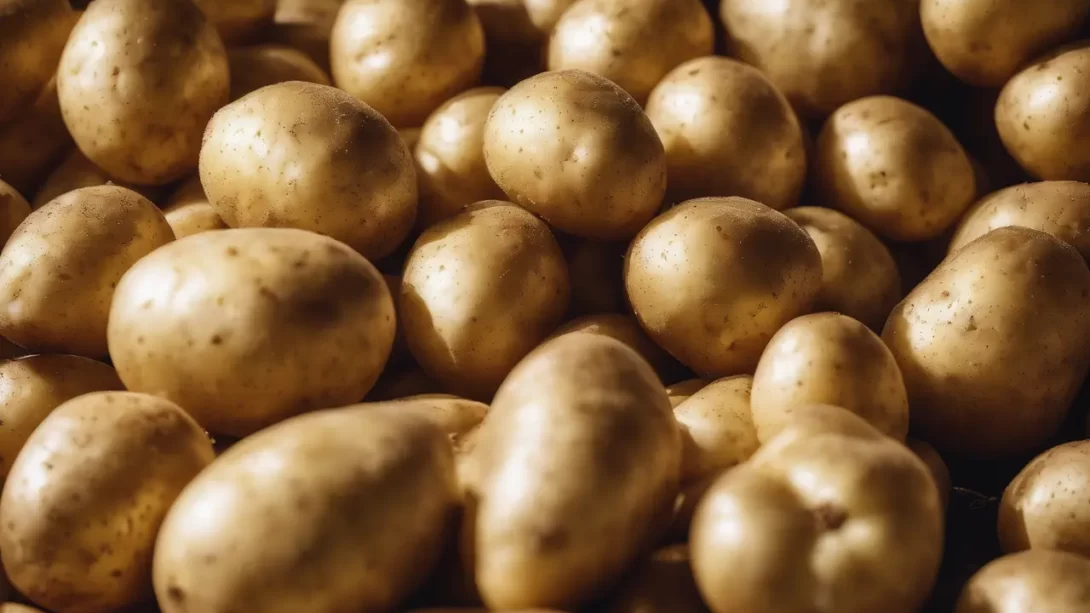Potatoes are a staple in many gardens, offering both nutritional value and the satisfaction of growing a versatile crop. Understanding the right planting time is crucial for a bountiful harvest. The USDA Hardiness Zone 8 encompasses a diverse climate, making it important to tailor your gardening practices to this specific region. This guide provides detailed insights into the optimal timing and methods for planting potatoes in Zone 8.
Potatoes and Their Growth Requirements
Potatoes, known scientifically as Solanum tuberosum, are a popular root vegetable appreciated for their adaptability and nutritional value. They thrive in well-drained, fertile soil and require a consistent amount of sunlight. The growth of potatoes is heavily influenced by temperature – too cold, and they won’t sprout; too hot, and the growth is stifled. Understanding the life cycle of a potato plant, from sprouting to harvest, is key to successful cultivation.
Zone 8 Climate and Its Impact on Potato Planting
USDA Hardiness Zone 8 is characterized by mild winters and long, warm summers. This zone typically experiences winter lows between 10°F to 20°F (-12°C to -7°C), making it a relatively temperate region. These conditions influence the best planting times for potatoes, as the crop needs a cool but frost-free growing period. Local weather variations within Zone 8, such as the difference between coastal and inland areas, also play a role in determining the most suitable planting schedule.
Optimal Planting Times for Potatoes in Zone 8
For gardeners in Zone 8, the ideal time to plant potatoes is in late winter to early spring. Specifically, planting can typically begin in February and continue through March. This timing allows the potatoes to take advantage of the cooler early spring temperatures, which are crucial for initial growth. It’s important to note that early varieties, which mature faster, should be planted at the beginning of this window, while mid-season and late varieties can be planted a bit later. The key is ensuring that the soil temperature is at least 45°F (7°C) for optimal germination and growth.
Preparing for Planting
Proper soil preparation is vital for healthy potato growth. In Zone 8, soils range from sandy to clay-heavy, so it’s important to work in organic matter to improve drainage and nutrient content. Choose potato varieties that are well-suited to the climate and disease pressures of Zone 8. Varieties like ‘Yukon Gold’, ‘Red Pontiac’, and ‘Russet Burbank’ often perform well in this region. Before planting, consider pre-sprouting, or “chitting,” your potatoes. This process involves placing the seed potatoes in a well-lit area at room temperature to encourage sprouts to form, giving them a head start once planted in the ground.
Planting Process and Best Practices
Planting potatoes involves several key steps. First, cut larger seed potatoes into chunks, ensuring each piece has at least one or two eyes (sprouts). Let these cut pieces dry for a couple of days to prevent rot. When planting, place each piece about three inches deep and 12 inches apart in rows. The rows themselves should be spaced about three feet apart to allow for ample growth. Water the newly planted potatoes lightly to settle the soil around them. As the plants grow, “hilling” becomes important. This process involves mounding soil around the base of the plants as they grow, which protects the developing tubers from sunlight and pests.
Ongoing Care and Maintenance
Consistent watering is crucial for potato growth, especially during the tuber formation stage. In Zone 8, where summers can be dry, ensure your potatoes receive at least 1-2 inches of water per week. Overhead watering should be avoided to reduce the risk of foliage diseases. Instead, use drip irrigation or a soaker hose for deep watering. Regularly check for pests like Colorado potato beetles and diseases such as blight. Mulching can help retain soil moisture and suppress weeds. A balanced fertilizer can be applied mid-season to support growth, but avoid high nitrogen fertilizers as they can promote foliage at the expense of tubers.
Harvesting and Storage
Potatoes are typically ready for harvest in Zone 8 from late spring to early summer, depending on the variety and planting time. For new potatoes, harvest can begin when the plants start to flower. For mature potatoes, wait until the foliage has died back completely. Gently dig around the plants, being careful not to damage the tubers. After harvesting, allow the potatoes to cure in a dry, shaded area for a few days to toughen their skin for storage. Store them in a cool, dark, and well-ventilated place to maximize their shelf life. Properly stored, potatoes can last several months.
Conclusion
Planting potatoes in Zone 8 requires an understanding of the local climate, soil preparation, and the right timing for planting and harvesting. By following these guidelines, gardeners can enjoy a successful and rewarding potato harvest. Remember, each gardening season brings its own challenges and opportunities, so stay observant and adaptable.



